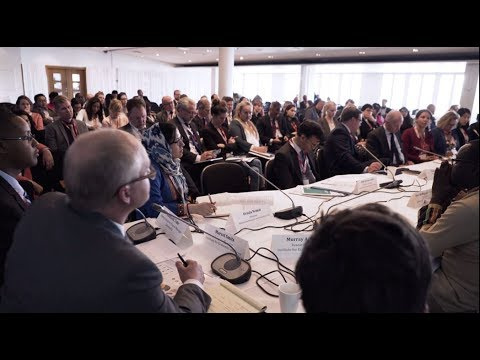. The aim was to identify good practices in peacebuilding interventions and approaches that can be replicated elsewhere. Climate change is an important stress factor in many regions and addressing its long-term impacts a precondition for sustainable peace.
"For too long we thought about peace, development, human rights, environment as separate disciplines, but if we are to build sustainable peace, we have to deal with them altogether.
In fact, the challenges are enormous. The international community recognized that the humanitarian crisis in the Northeast is one of the worst disasters in human history.
Two billion people live in countries affected by fragility or violent conflict. At the same time, climate change impacts such as catastrophic drought and famine reverse hard-won development gains. At the Stockholm Forum, high-level policy makers met with activists and experts from countries directly affected by conflict, to discuss the links between peace and development.
The beauty about this conference is that it is about solutions. It is not just about bringing expertise to bear or talking about the latest research, no, it is about going one step further.
There is no quick fix to fixing fragile states. We need to work long-term, we need to work together, we need to work seriously, that’s the only way to prevent conflict from erupting again.
Breaking the cycles of violent conflict and relapse is fundamental. But in fragile countries, many stress factors converge. Climate change is one of them. Addressing its impacts is a precondition for peace and security. But how can we do that? What really works?
…if you are asking ‘what works?’, which is the question of our two days, what works?, one of the things is: inclusivity works. And not being inclusive actually leads to failure.
However, in addition to this, we must urgently give increased attention to the linkages between climate change and security. We also support the appointment of a High Level Representative on Climate and Security.
Under the tag of climate security, peace and development, everything is interlinked. Development has to be holistic.
We understand the environmental and the climate change implications to the drivers of conflict but also to our peacebuilding responses so we integrate climate analysis into our conflict risk assessment tools.
The entire aspect of violent extremism has shown that you really have to have a coordinated, but more importantly, a comprehensive approach. It is not only about livelihood, it is about governance, it is about climate issues, it is about inclusion of young people and women and people who are marginalized.
It is clear that ‘Sustaining Peace’ and achieving sustainable development are indivisible global agendas and that foreign policy can help integrate the two.
We cannot work in single sectors. We cannot have programmes that only do conflict. We cannot have programmes that only try to address people’s access to water or their access to livelihood support. We need to try and find ways of bringing those things together."










